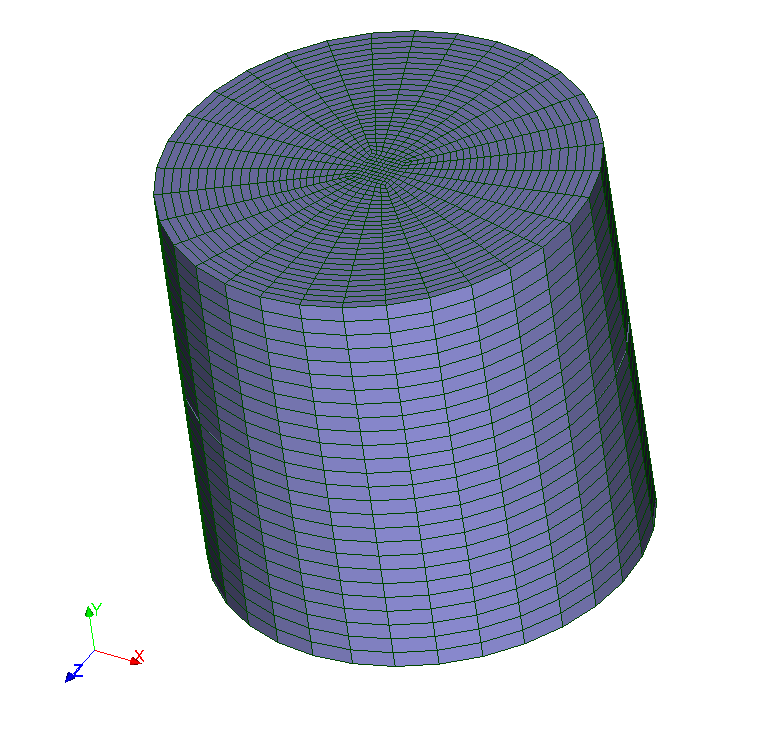5. C modeling#
In this modeling, the classical finite element method is used, the crack is meshed.
5.1. Characteristics of modeling#
We use the 3D modeling of the THERMIQUE phenomenon.
5.2. Characteristics of the mesh#
The structure is modelled by a \(\mathrm{3D}\) mesh composed of \(25088\) HEXA8.

Figure 5.2-1: C mesh
5.3. Tested sizes and results#
We test the temperature at the end of the last time step (\(t=1\text{.}s\)) at nodes \({P}^{\text{+}}(\pi \mathrm{/}4)\) and \({P}^{\text{-}}(\pi \mathrm{/}4)\) (see Figure)
Identification |
Reference type |
Reference value |
Tolerance |
Point \({P}^{\text{+}}(\pi \mathrm{/}4)\) - \(\mathit{TEMP}\) |
“AUTRE_ASTER” |
\(\mathrm{23,559884847913}°C\) |
|
Point \({P}^{\text{-}}(\pi \mathrm{/}4)\) - \(\mathit{TEMP}\) |
“AUTRE_ASTER” |
\(\mathrm{15,592470476233}°C\) |
|